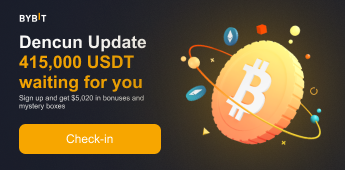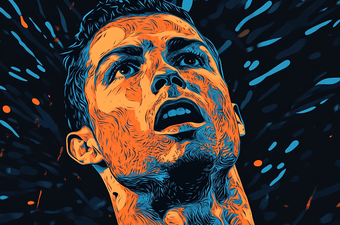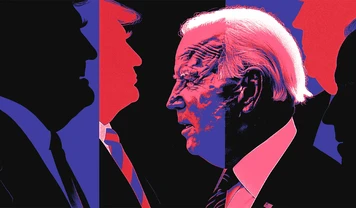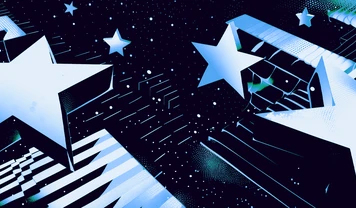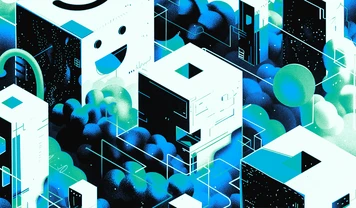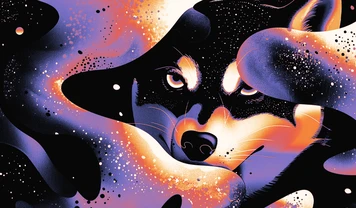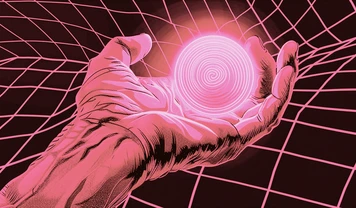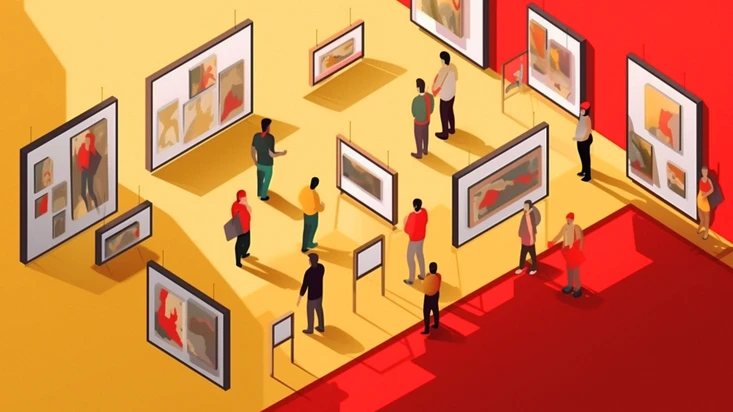
Top NFT Marketplaces for 2023
We will provide a brief overview of the top NFT marketplaces in the industry to assist you in making a decision. Let's dive into our list of the best NFT marketplaces.
Non-fungible tokens exploded in popularity in 2021, but over the past few months, they seem to be cooling off. Even so, some industry pros say they aren’t going anywhere. But where are investors buying these assets? Due to the popularity of NFTs, numerous marketplaces online sprung up - selling everything from virtual collectibles to digital art at every price point imaginable.
An NFT marketplace is a digital platform for buying and selling NFTs. These platforms allow people to store and display their NFTs plus sell them to others for cryptocurrency or money. Some NFT marketplaces also allow users to mint their NFTs on the platform itself.
In exchange for a fee, the NFT marketplace will typically handle the transfer of an NFT from one party to the other.
Each NFT marketplace has its own system for how it operates. The types of NFTs available, fees, payment options, permitted blockchains and other rules will depend on which one you use.
| NFT Marketplace | Blockchain supported | Wallet support | Fees | Types of NFTs |
| OpenSea |
Ethereum, Solana, Polygon, Avalanche, and BNB | Metamask, Coinbase wallet, Ledger, Phantom, BitKeep | 2.5% per transaction | Art, collectibles, domain names, music, photography, sports, trading cards, utility. |
| Blur | Ethereum | Metamask, WalletConnect, Coinbase, OKX | No fees | NFT aggregator |
| Rarible |
Ethereum, Polygon, Tezos and Immutable X | Metamask, Binance Smart Wallet, Wallet Connect, Coinbase Wallet, Torus, Portis | 1% flat fee for buyers and sellers | Art, music, photography, auction, games, metaverse |
| SuperRare | Ethereum | Metamask, WalletConnect, Coinbase wallet, Rainbow, Trust wallet, Omni. Credit cards. | 15% on first sale, flat 3% on all purchases | High-end NFT artwork |
| Crypto.com | Crypto.org Chain | 15% listing fee | Crypto.com DeFi wallet credit or debit cards | Art, celebrities, gaming, music, sports, etc. |
| NBA Top Shot | Flow and compatible blockchains | 5% for every sale | Dapper Wallet, credit or debit cards | Basketball video clips |
| Foundation | Ethereum | 15% royalty fee | Metamask, Coinbase wallet | Art, photography, celebrities, music, etc. |
| Nifty Gateway | Ethereum | 20% marketplace fee | Metamask | Crypto art, music, photography, fixed-price auctions, etc. |
| Axie Infinity | Ethereum with Ronin sidechain | 5.25% fee for sellers | Ronin Wallet | Gaming |
| Binance NFT | BNB chain, Ethereum, Polygon | 1% flat fee | Binance wallet, Metamask, Trust Wallet | Art, sports, gaming, collectibles, entertainment, etc |
Best NFT Marketplaces for 2023
The NFT Market has exceeded the $40 billion milestone achieved last year. Many people are concerned about finding a trustworthy and cost-effective NFT marketplace to engage in trading and expand their portfolio. If you're interested in entering the NFT space and are unsure about which marketplace to choose, you've come to the right place.
Disclaimer. Before we dive into the world of NFT marketplaces, we must be sure to note that in 2023, even the best NFT works are losing value. So study projects carefully and do your own research before investing. Not financial advice. Don't risk funds you can't afford to lose.
OpenSea
OpenSea is so far one of the top NFT marketplaces in the world. This is perfectly evaluated by the trading volume. The platform enables the users to mint, purchase, and sell an expansive range of NFTs. These digital tokens include digital collectibles, digital art, trading cards, virtual worlds, and much more. This marketplace is built on the Ethereum blockchain and as of 2023, it supports three blockchains: ETH, MATIC and Klatyn.
With the help of OpenSea, users can have access to more than 80 million NFTs being ready to be traded. The OpenSea platform enables the users to mint and fixes their seller’s profiles using a unique infrastructure. This way, the transaction fee is only 2.5% for every sale that is done in the marketplace. At the present time, the OpenSea platform is filled with more than 600,000 users in just 2022. Thus, making it one of the top NFT marketplaces in the business.
Pros of OpenSea
- There are no gas costs for NFT creators until a buyer makes a purchase.
- A wide variety of NFT collectibles and goods are available.
- Hundreds of payment alternatives are available. (Debit & Credit Card too)
- Available on iOS and Android OS.
- Has the support of 14 types of crypto wallets.
- Buyers can sell NFTs, and the original miner can earn a good amount in royalty.
Cons of OpenSea
- Compared to other sites, such as Rarible, which provides up to 50% royalties, 10% is a low royalty.
- There is currently no support for fiat currencies such as the USD.
Blur
Jack Dorsey's hype project Blur is a decentralized NFT marketplace built on the Ethereum blockchain. It allows creators to mint, sell, and trade unique digital assets using the ERC-721 standard. Blur has its own native token, $BLUR, which is used to pay for transaction fees on the platform. BLUR can also be staked to earn rewards and participate in governance decisions.
The Blur Marketplace became very popular immediately after its launch, and is constantly being compared to OpenSea. Let's look at the main pros and cons of this platform.
Pros of Blur
- Easy to use. The platform is designed to be user-friendly, with a simple interface for creating and selling NFTs.
- Community-driven. Blur is built on a community-driven model, with users able to vote on the direction of the platform.
- Open-source. The code for Blur is open-source, allowing developers to contribute to the project and build on top of it.
- Secure. Blur uses smart contracts to ensure that transactions are secure and transparent.
Cons of Blur
- Limited selection. As a relatively new marketplace, Blur may not have as many NFTs available as some of the more established platforms.
- Lack of liquidity. Since Blur is a smaller marketplace, it may be harder to find buyers for your NFTs or to sell them at a fair price.
Rarible
Rarible allows users to buy and sell art, collectibles, video game assets and NFTs. You can buy and deal on Rarible with Ethereum, Flow and Tezos.
In terms of fees on marketplace sales, Rarible takes 1% on the buyer side and 1% on the seller side.
An interesting aspect of Rarible: Rather than having in-house management decide everything, Rarible created its own native token called RARI. The holders of RARI get to vote on company decisions like company policy changes.
In 2021, Rarible announced a partnership with Adobe to make it easier to verify and protect the metadata for digital content, including NFTs.
For those that want access to a large network with solid connections, Rarible could be the best NFT marketplace. At the same time, it also still follows a decentralized mindset.
Pros of Rarible
- You can pick up to 50% of your future income as an artist.
- Beginner-friendly marketplace with a clean and easy User Interface.
- It is really simple to create and sell NFTs.
- Native token $RARI is used as a governance token.
Cons of Rarible
- Higher gas fees.
- Customer Support is not very responsive.
SuperRare
SuperRare is a high-end NFT art marketplace that positions itself in the NFT ecosystem as an art gallery. This marketplace doesn’t accept “meme style” NFTs, and is highly selective with NFT submissions.
Given that SuperRare spends so much time reviewing work before it’s available for sale, investors can feel more confident in the quality. For their services, SuperRare charges 15% the first time an NFT is sold on the primary market. There is also a flat 3% of every transaction, which the buyer pays.
SuperRare could be a good choice for someone looking for high-end NFT artwork, especially pieces with a more classical style.
Pros of SuperRare
- Offers a buying system.
- The NFT is exclusive.
- The user interface is excellent.
- Royalty fees are high.
Cons of SuperRare
- The commission rate is high (15%).
- Only ETH is accepted as a payment option.
- If you are an artist, getting on the platform will not be easy.
Crypto.com
Another marketplace you can consider is Crypto.com. It is a popular exchange platform for cryptocurrency and is widely used by over 10 million people. They launched their own NFT marketplace, offering NFTs from different categories such as gaming, art, celebrities, sport, and more.
It is very easy to invest in NFTs on Crypto.com. You can sign up within a few minutes and start purchasing. You can directly purchase the NFT using your credit or debit card. The best part about Crypto.com is that it doesn’t charge any transaction fee on your purchase.
Pros Of Crypto.com
- You don’t have to pay any gas charges on Crypto.com.
- It does not ask for any transaction fee when purchasing an NFT.
- When you sell an NFT, you will have to pay a transaction fee of 1.99%. It's not bad.
- It also offers ETH-based NFTs, and you can easily purchase an NFT using Ethereum.
- The marketplace is easy to use, and you can find NFTs according to their categories.
Cons Of Crypto.com
- There is not much information available on Crypto.com on how to create an NFT.
- Not many payment methods are available.
NBA Top Shot
If you’re a major basketball fan, the NBA Top Shot marketplace lets you buy NFTs of great moments in basketball history.
You can buy video clips, play highlights and art for both the NBA and the WNBA. But some of these Moments aren’t cheap. A LeBron James slam dunk video fetched $208,000 in February 2021. Let's be honest: this video can easily be found on the internet and is completely free to watch. But of course, this is no longer a collector's item.
The NBA built and manages this NFT marketplace, and they have exclusive rights to these video clips. Plus, you know you’re dealing with a large, reputable organization.
The NBA Top Shot marketplace is one example of major companies getting on this trend. Others include the DraftKings Marketplace and the Associated Press’ NFT marketplace. Even GameStop plans to launch an NFT marketplace this year.
Users can purchase Moment NFTs with credit/debit cards or select cryptocurrencies, such as Bitcoin, Ethereum, Bitcoin Cash, DAI or USDC. And of course, fees are added to the purchase price, whether you’re buying that iconic moment with a credit card or cryptocurrency.
Pros of NBA Top Shot
- Flow blockchain, which has cheaper costs than Ethereum.
- Convenient for users who do not own cryptocurrencies.
- High popularity means more resale value.
- New releases are routinely released. But beware, this rule does not apply in a bear market.
Cons of NBA Top Shot
- Cryptocurrency support is limited.
- Restricted to NBA-related stuff.
Foundation
Foundation is yet another peer-to-peer NFT marketplace on our list. It exists to advance the culture of digital art, cryptocurrency, and NFT enthusiasts.
As the platform mainly focuses on Digital art projects, the team is well-known for staging live auctions and streamlining the online bidding procedure.
Similar to SuperRare, creators will get 85% of the selling price for an NFT. The foundation takes the remaining 15%. Every time an NFT is sold further, the artist will receive a royalty fee of 10 percent.
Anyone can build their own Foundation account and start collecting NFTs. The auction mechanism is actively used here. The clock starts counting from 24hrs as soon as users make their initial offer that reaches the base price of a particular NFT. If a user bids in the final 15 minutes of the countdown, the countdown stretches to extra 15 minutes.
Pros of Foundation
- User-friendly Interface.
- 10% royalty fee to the artist.
- Auction system available.
Cons of Foundation
- For artists only.
- The commission rate is high.
- The rate of gas and minting is high.
Nifty Gateway
Nifty Gateway is known for hosting expensive and exclusive NFT sales, including digital artist Pak’s “The Merge”, which sold for $91.8 million. It made headlines when the platform was acquired in late 2019 by Gemini, which is run by the Winklevoss twins, Cameron and Tyler Winklevoss.
This marketplace focuses on artwork, especially artwork from celebrities and top artists. To boost demand, Nifty Gateway uses an “open editions” system. When a new type of NFT comes out, you can only buy editions for just a limited time.
This marketplace does allow you to make purchases with your credit card. Nifty Gateway could be the way to go if you’re looking to make a large investment in NFTs and want access to higher-end options.
Pros of NiftyGateway
- Custodial Marketplace.
- Easy for beginners and non-programming miners due to the excellent technical support.
- Users can purchase NFTs through credit/debit cards.
Cons of NiftyGateway
- No support for Crypto wallets.
- Only well-known artists are accepted. (This one is for the creators who might not have that much influence but may have very high talent).
Axie Infinity
The Axie market is a worldwide NFT platform for the Axie decentralized video game.
The platform boasts more than 2 mil active users and a thriving ecosystem of third-party games and applications.
The platform allows users to make new Axies, which are charming digital creatures that look like pokemon and that you can grow and utilize in the game.
These creatures are available for trade on the Axie Marketplace or sale on major exchanges such as UniSwap. Axies are mostly utilized for in-game combat.
With Axie Infinity’s increasing popularity, users have a large market to trade.
Pros of Axie Market
- Axie Infinity is accessible on both PC & mobile platforms.
- You may battle, acquire, grow, and develop with a huge universe.
- Possibly the most successful NFT-based video game to date.
- Possibility of earning a realistic quantity of cryptocurrency
Cons of Axie Market
- For beginner players, it is rather costly.
- To play the game, you must purchase at least three Axies.
- The only acceptable payment methods are Ethereum and Axie Infinity.
- In a bear market, interest in this kind of project falls heavily.
Binance NFT
The world’s largest cryptocurrency exchange, Binance, launched its NFT business in June 2021. Users need to register and verify their identities with Binance to access the platform. Creators and collectors transact in three main cryptocurrencies: BNB, BUSD and ETH.
Users can purchase individual items or mystery boxes containing various curated collections. There is also a “premium” and “standard” collection listing. Premium collections are exclusive drops from popular influencers, while the standard collection features items minted by typical users.
Since launching, the Binance NFT marketplace has organized NFT drops for popular celebrities and official entities, including Russell Simmons, Paulo Del Valle, Franck Muller the Uganda National Museum and Parimatch.
Pros of Binance NFT
- Binance is a highly trusted brand in the cryptocurrency industry.
- You’ll only need to pay a 1% of transaction fee whether you are a buyer, seller, or trader.
- Creating and verifying your Binance account is free.
- It’s easy to navigate, and processes are simple to manage.
Cons of Binance NFT
- Both sides should pay the fee if you are a buyer or seller.
- Binance is compared young to competitors and isn’t yet capturing the rarest or most sought-after NFTs.
Bonus Track. CryptoPunks/Larva Labs
CryptoPunks is one of the earliest examples of NFTs on the Ethereum blockchain. It consists of a series of 10,000-pixel art characters with unique attributes. Originally, the CryptoPunk collectibles were free. However, the only way to get your hands on one of them nowadays is by purchasing them. Be warned that buying one costs a lot. The most affordable CryptoPunk costs around 70 ETH, which equates to around $100,000.
Larva Labs is the original creator of this set of collectibles. Their official website is an NFT marketplace that allows you to bid on your favourite items when they are up for sale. You can purchase your CryptoPunks here instead of using third parties.
Pros of Larva Labs
- Has more than 10k one-of-a-kind CryptoPunk avatars.
- The majority of CryptoPunk figures are sold for more than a million dollars.
- Supports MetaMask.
Cons of Larva Labs
- Higher gas charges.
- A computer, not an artist, creates the avatars.
- The Requirement for Non-Custodial crypto l Wallets Reduces User-Friendliness.
Tips for choosing an NFT marketplace
First, remember that an NFT (non-fungible token) simply represents ownership of an asset. Before choosing an NFT marketplace, you'll first want to decide the kind of digital asset you're interested in buying, selling, or creating. Just about anything digital - the written word, videos, video games, art, collectors items, etc. - can be tokenized on a blockchain (such as Ethereum), the most common blockchain network NFTs are built on, so narrowing down your interest is a good place to start.
Another consideration is the type of tokens supported on a marketplace. Some support a wide variety of tokens. Others are closed marketplaces and utilize a specific proprietary token. When opening an NFT marketplace account, be sure to fund your wallet with the right crypto or token required to participate in the site's activity. You'll be prompted to link your wallet to the NFT marketplace once you've opened up an account. Also check to see what kind of security the marketplace has in force, and if it has had any issues in the past.
Investing in NFTs
NFT marketplaces are your path to start investing in digital assets, collectibles, and art, but there are lots of options out there. Be sure to choose one that suits your buying and storage needs based on the type of NFT you're after and the crypto you're interested in using for transactions.
Also be aware that this is a new industry and is highly speculative. Some NFTs may rise sharply in value, others may collapse, no guarantees. The value of digital art and collectibles works much the same as physical art and collectibles: value is subjective and determined by factors such as uniqueness and the reputation of the artist who made it. Make a purchase - if any - with your overall investment strategy, net worth, and investment time horizon in mind.
Frequently Asked Questions
What is the most popular NFT marketplace?
OpenSea has nearly traded over $20 billion in all-time sales. It’s available for both mobile and web apps. Users can mint, trade, collect, send to and receive NFTs from external wallets and exchange NFTs through the app.
How do NFT marketplaces work?
When you create an account with an NFT marketplace, you can browse through all their available options for sale. You can also add a payment method, and some require you to link a crypto wallet to pay with crypto, while others allow you to use a credit card.
Some sites let you buy NFTs directly for a fixed price, while others will use an auction.
If you complete the transaction, the NFT marketplace will record it on its blockchain showing the change of ownership.
Is NFT a good investment?
In 2023 it is very doubtful. More likely no than yes. Regardless, NFT can be a good investment if it has value - most do not. But make sure to checklist NFT value in terms of what it represents vis-a-vis pricing, community, and the company behind it. There is a very high risk of losing money here.
Jack Dorsey Tyler Winklevoss Binance Ledger MetaMask OKX Phantom Trust Wallet



